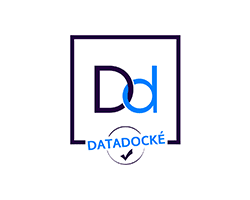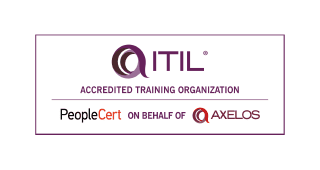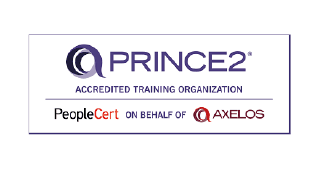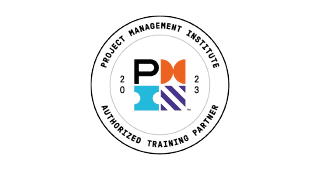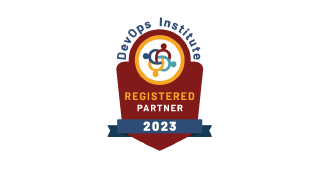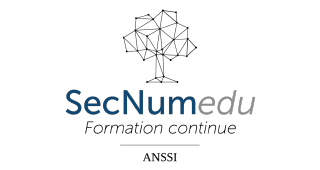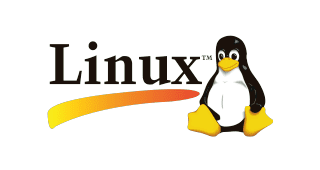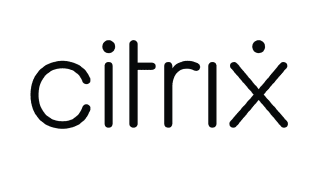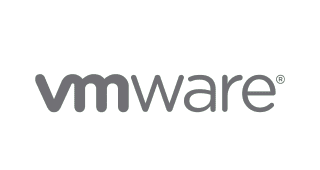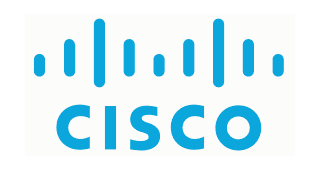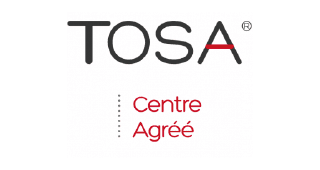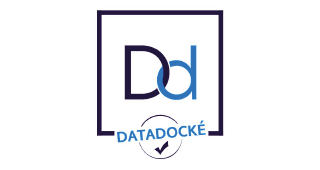Nos formations à la Une
Bureautique
ExcelExcel Initiation : Modéliser et mettre en forme des calculs
ExcelExcel Initiation : Modéliser et mettre en forme des calculs
Cybersécurité
Sécurité défensiveParcours introductif à la cybersécurité
Sécurité défensiveParcours introductif à la cybersécurité
Cybersécurité
Management de la sécuritéISO 27005 - Risk Manager (certification incluse)
Management de la sécuritéISO 27005 - Risk Manager (certification incluse)
Cybersécurité
Management de la sécuritéISO 27001 Lead Implementer (examen inclus)
Management de la sécuritéISO 27001 Lead Implementer (examen inclus)
Cybersécurité
Management de la sécuritéSécurité : Certified Information Systems Security Professional (CISSP)
Management de la sécuritéSécurité : Certified Information Systems Security Professional (CISSP)
Développement
Visual Studio et Visual Studio .NETProgrammation C# : développer en .NET avec Visual Studio
Visual Studio et Visual Studio .NETProgrammation C# : développer en .NET avec Visual Studio
Cybersécurité
Management de la sécuritéISO 27001 Lead Auditor (examen inclus)
Management de la sécuritéISO 27001 Lead Auditor (examen inclus)
Bureautique
Power BIPower BI : Concevoir des tableaux de bord
Power BIPower BI : Concevoir des tableaux de bord
Développement
JavaJava, programmation avancée
JavaJava, programmation avancée
Présentation de notre centre de formations informatiques
EduGroupe accompagne les entreprises dans :
- La conception et la mise en œuvre de leurs projets de formations informatiques techniques, bureautiques, en développement personnel, de reconversion professionnelle
- Leurs projets de migration et/ou liés aux nouveaux usages
- La recherche de solutions de financement adaptées tant pour les individus que pour l’entreprise (CPF, Actions Collectives, POE, CQP, Pro-A…)
- La certification des compétences
Nos consultants-formateurs sont en mesure de vous proposer des formations sur-mesure adaptées à vos besoins.
Notre centre de formations informatiques à Paris et partout en France
EduGroupe offre, avec :
- son Campus de Formation parisien de Paris Porte Maillot
- son appartenance aux réseaux Microsoft MPN et d’autres partenaires locaux (Orléans, Tour, Rennes, Nantes, Bordeaux, Pau, Toulouse, Marseille, Lyon, Clermont-Ferrand, Dijon, Strasbourg, Rouen, Lille…)
une implantation nationale et internationale.
Nos locaux sont conformes aux normes d’accessibilité et notre référent handicap se tient à votre disposition au 01.71.19.70.30 ou par mail à referent.handicap@edugroupe.com pour recueillir vos éventuels besoins d’aménagements, afin de vous offrir la meilleure expérience possible dans notre centre de formations informatiques.
Quelles sont les grandes missions assurées par EduGroupe ?
Afin de répondre aux besoins et aux exigences des professionnels, EduGroupe vous propose un dispositif complet de formations professionnelles dans le domaine de l’informatique technique, de la bureautique ainsi qu’en développement personnel mais aussi un accompagnement de vos projets de migration logicielle.
C’est ainsi que nous nous engageons à vous accompagner dans les processus de formation de vos collaborateurs, de reconversion professionnelle et de transformation digitale du dispositif de formation de votre entreprise.
salariés
de chiffre d'affaires en 2023
d'expérience
stagiaires formés en 2023
Taux de satisfaction client en 2023
Consultants formateurs en 2022
QUELS SONT LES LEVIERS DE FORMATION UTILISÉS ?
EduGroupe est à la recherche constante de nouvelles méthodes d’apprentissage, c’est pourquoi en raison de notre grande expérience nous avons développé des outils pédagogiques originaux, personnalisés et ludiques dans notre centre de formations informatiques à paris et à distance.
Nous tenons à rester réactifs et efficients, aussi outre les domaines variés dans lesquels nous sommes aptes à vous former,
nous avons enrichi notre catalogue de différents services :

La formation dans notre centre de formations informatiques
Monter en compétences sur les technologies informatiques ; Travailler sur soi-même
Elle peut être assurée différentes façons :
- inter-entreprises,
- intra entreprise,
- à distance (grâce au LiveOnLine)
- ou encore sur-mesure.

L’accompagnement de vos projets de migration logicielle
La formation de vos équipes pour garantir la réussite de votre projet
EduGroupe offre un accompagnement de vos projets de migration de logiciel comme Office 365. Notre offre porte sur l’ensemble du cycle de vie de votre projet : de la phase de réflexion (ateliers de co-réflexion, structuration de la démarche, stratégie de communication et de formation…), à sa déclinaison opérationnelle sur le terrain (communication, formation, conception de support utilisateur…).

Le Reskilling
Se reconvertir vers des métiers porteurs grâce à notre centre de formations informatiques
Le reskilling est une offre de service qui s’adapte le plus aux mutations actuelles. EduGroupe vous accompagne et vous épaule dans la formation de votre collaborateur ou futur salarié afin de l’aider à acquérir de nouvelles compétences. L’offre reskilling de notre organisme de formation repose principalement sur la POE : Préparation Opérationnelle à l’Emploi.

Le Digital Learning
Innover votre dispositif de formation
Nous vous accompagnons étape par étape afin de mettre en place un dispositif de Digital Learning pour former vos collaborateurs. Comment procédons-nous ? Nous analysons en amont votre projet de formation grâce à la réalisation d’un audit ; pendant la phase de formation à proprement parler, vous profitez de nos solutions de formations ou communication digitales spécifiques et sur mesure adaptés à vos besoins (modules de e-learning, rapid-learning, quizz…) ; à la suite de cette formation professionnelle continue, nous nous assurons de l’évaluation des acquis. Une solution de blended-Learning regroupant formation en présentiel au sein de notre centre de formations informatique à Paris ou ailleurs et modules digitaux peut vous être proposée.
Par ailleurs, la force d’EduGroupe, centre de formations informatiques professionnelles, c’est aussi le sur-mesure : bien que nous vous proposions un très large catalogue de modules et de programmes standardisés, nous pouvons également concevoir des formations personnalisées qui s’adaptent à vos besoins : n’hésitez-pas à prendre contact avec notre équipe pédagogique pour la création de votre propre parcours de formation.
Pourquoi faire confiance à EduGroupe, Centre de formations informatiques ?
EduGroupe existe depuis plus de trente ans.
Afin de satisfaire notre clientèle professionnelle des plus exigeantes, nous avons su nous développer et nous organiser afin de rester efficaces et efficients. Pour cela, nous disposons de trois pôles commerciaux spécialisés (Reconversion professionnelle, Formation bureautique/PAO/Développement personnel et Formation informatique technique), d’un pôle pédagogique et un pôle marketing.
Vous pouvez avoir pleinement confiance dans notre centre de formations informatiques professionnelles qu’est EduGroupe car nous nous reposons sur différentes valeurs :
- nous tenons à être réactifs : nous nous engageons à répondre aux demandes et aux problématiques de nos clients avec précision et dans les meilleurs délais ;
- nous nous adaptons : notre catalogue d’offres de formations professionnelles est en constante évolution afin de présenter des réponses spécifiques, adaptées et ;
- notre priorité est la satisfaction et la transparence : les collaborateurs d’EduGroupe ont à cœur d’être à l’écoute de leurs clients et de nouer avec eux une relation empreinte de transparence et d’honnêteté.


